Forbidden Supernought
Wheel Size: 29’’ front / 27.5’’ rear; 29’’ rear compatible
Travel: 205 mm rear / 200 mm front
Geometry highlights:
- Sizes offered: S1, S2, S3, S4
- Headtube angle: 63.1°
- Reach: 466 mm (size S3)
- Chainstay length: 460 mm (Size S3; adjustable +/-10 mm via bolt-on dropouts)
Frame material: Carbon fiber
Price: TBD
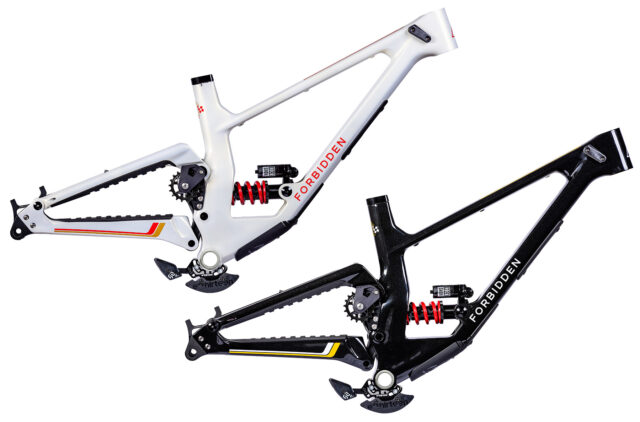
Intro
When Forbidden announced that they were starting a World Cup Downhill team (and had signed Connor Fearon to ride for it), it came as no surprise that a prototype DH bike was soon to follow. Now the production version of that bike is here, and while a lot of the details of the Supernought are in keeping with what we’ve come to expect from Forbidden, there are some interesting surprises here, too.
So let’s crank up the Black Sabbath and see what Forbidden has come up with.

The Frame
The prototype versions of the Supernought were the first bikes to be spotted with Forbidden’s “V2 Trifecta” suspension layout — essentially an upside-down Horst link arrangement with an idler pulley and high-virtual-pivot design. The second-generation Forbidden Druid (which we should be getting on this spring) was the first Forbidden to come to market with the design, and now it’s got a (much) longer-travel sibling in the Supernought. We can only assume that a second-generation Forbidden Dreadnought is coming to split the difference between the two, but we’ll just have to see there.
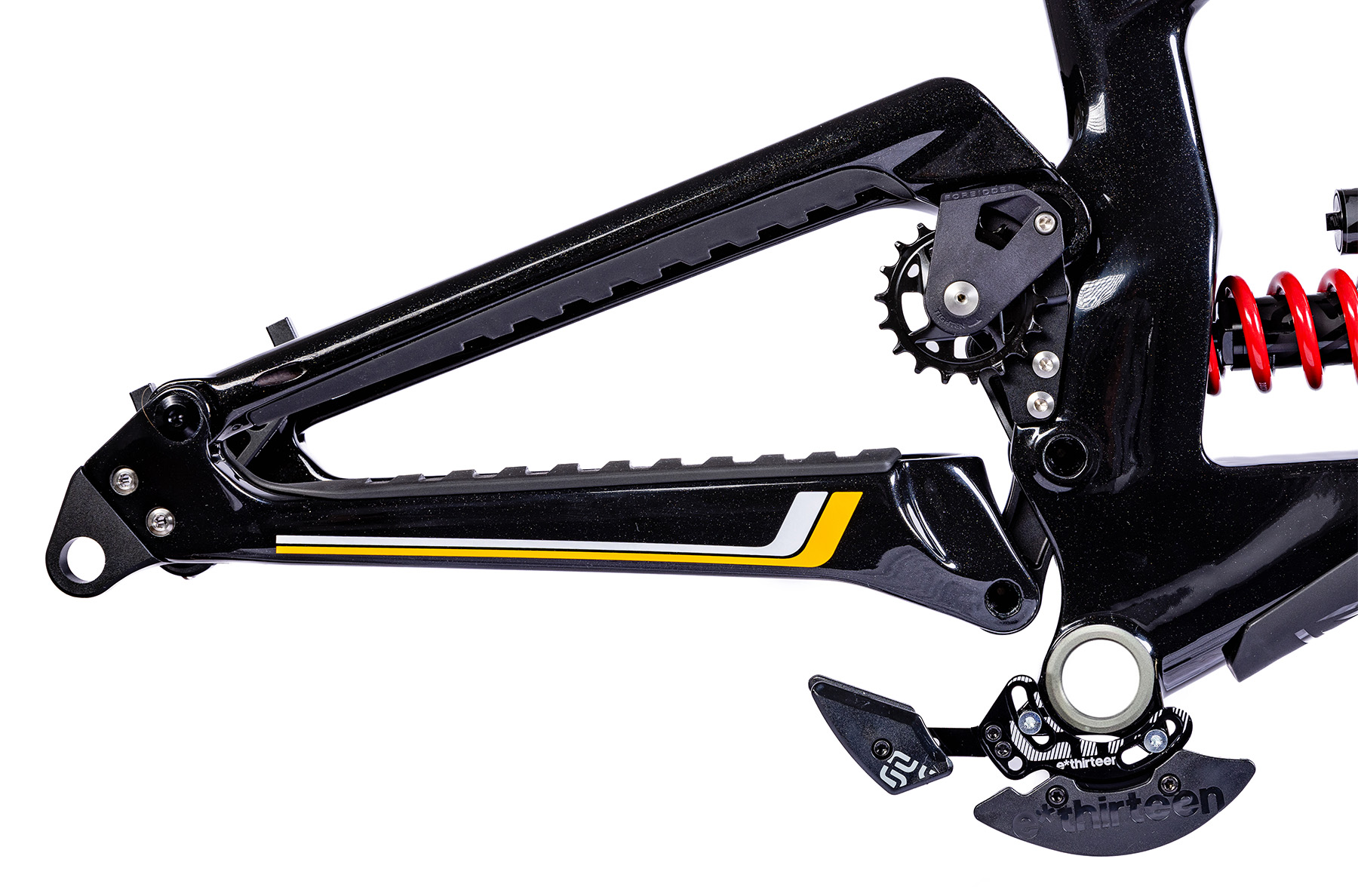
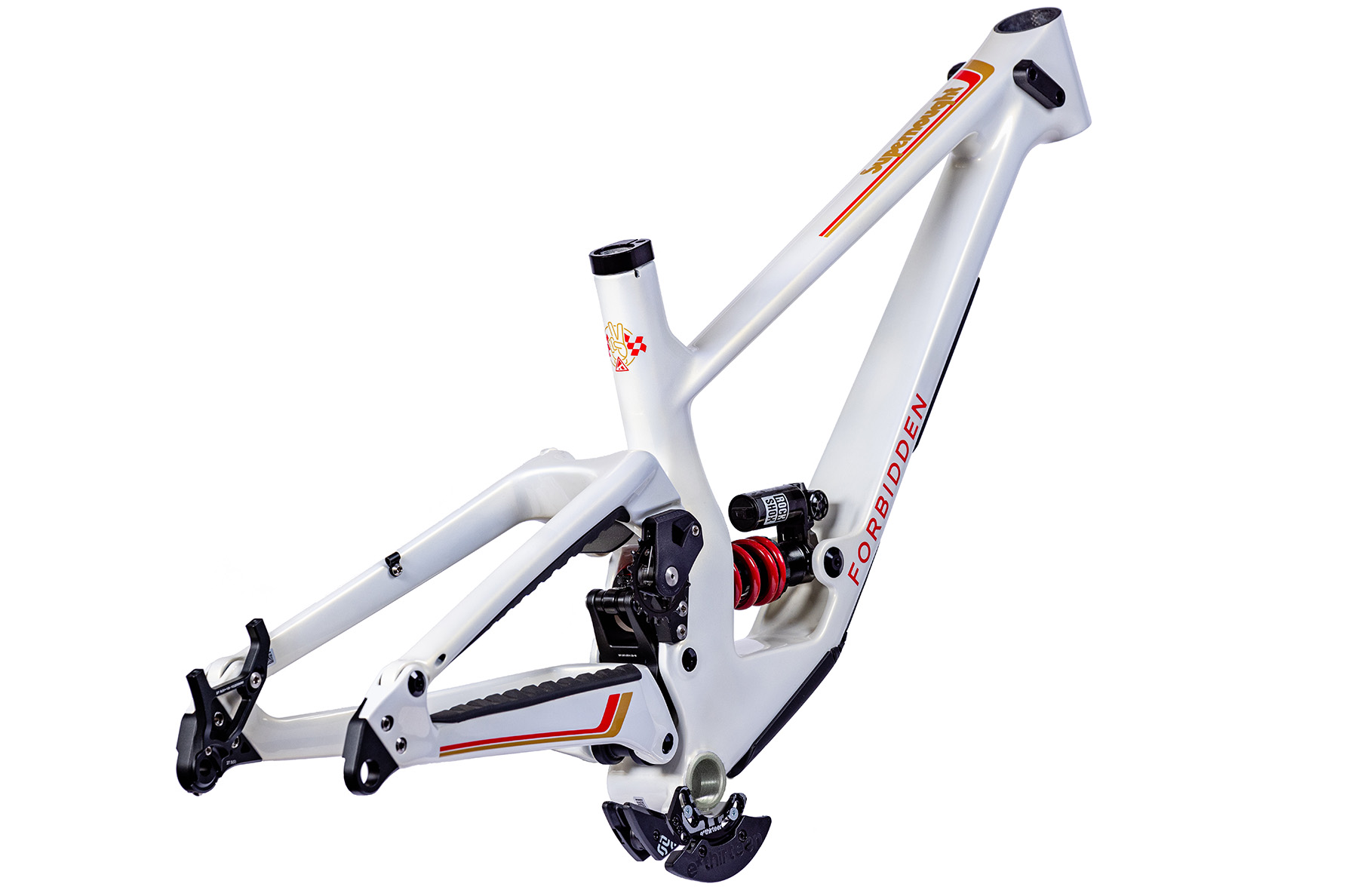
The Supernought is offered with a carbon fiber frame only and gets 205 mm of rear-wheel travel from a 225 x 75 mm Trunnion mount shock. Compared to the high single-pivot original platform used on the V1 Druid and Dreadnought, one of the biggest changes with the new V2 Trifecta suspension layout is that it’s allowed Forbidden to dramatically lower the amount of anti-rise, especially deeper in the travel. The Supernought’s anti-rise still starts pretty high, at just under 140%, but falls off sharply, actually going negative by bottom out. This is in contrast to the Dreadnought, which starts a few percentage points lower but only falls off to about 105% by the end of its travel. It’ll be interesting to see if this makes for more consistent braking performance — something I struggled with on the Dreadnought — due to the suspension being less impacted by braking, or if the vast changes in anti-rise introduce some quirks of its own.
The Supernought’s leverage curve is quite progressive, going from a little over 3.2:1 at topout to just under 2.2:1 by the end of travel; it does so in what is a generally straight-ish line, though the amount of progression does somewhat increase deeper in the travel. Despite the changes in layout, the shape of the curve is pretty similar to that of the Dreadnought (albeit at a higher overall leverage ratio on the Supernought). The Supernought’s anti-squat curves are also pretty interesting, starting at anywhere from about 75% to 125% depending on gear ratio, and falling off dramatically, again winding up well into negative territory by the end of travel. Of course, nobody’s pedaling at bottom-out (especially on a 205mm-travel bike) but the Supernought displays an unusually big swing in both anti-squat and anti-rise numbers across its travel range.
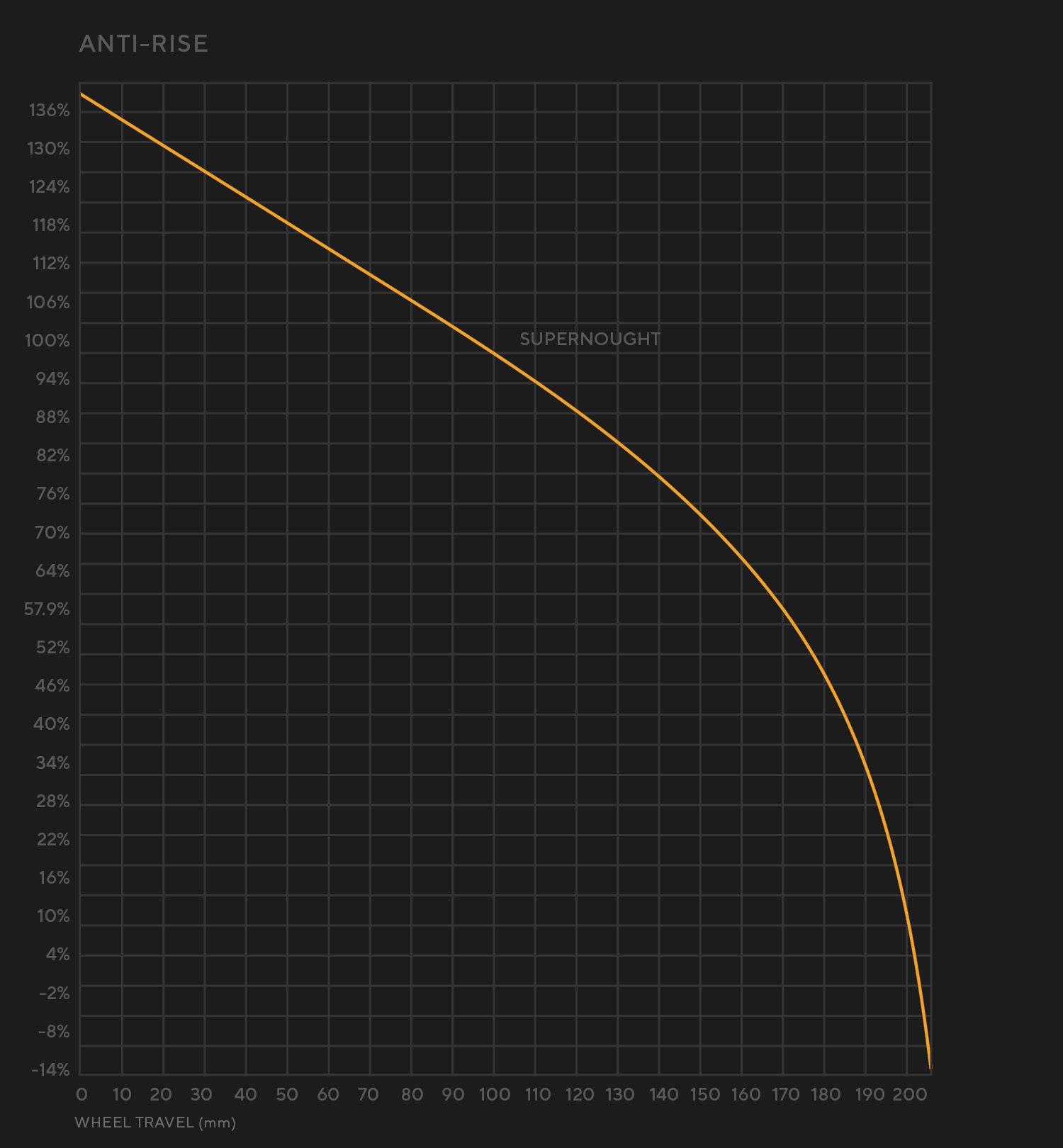
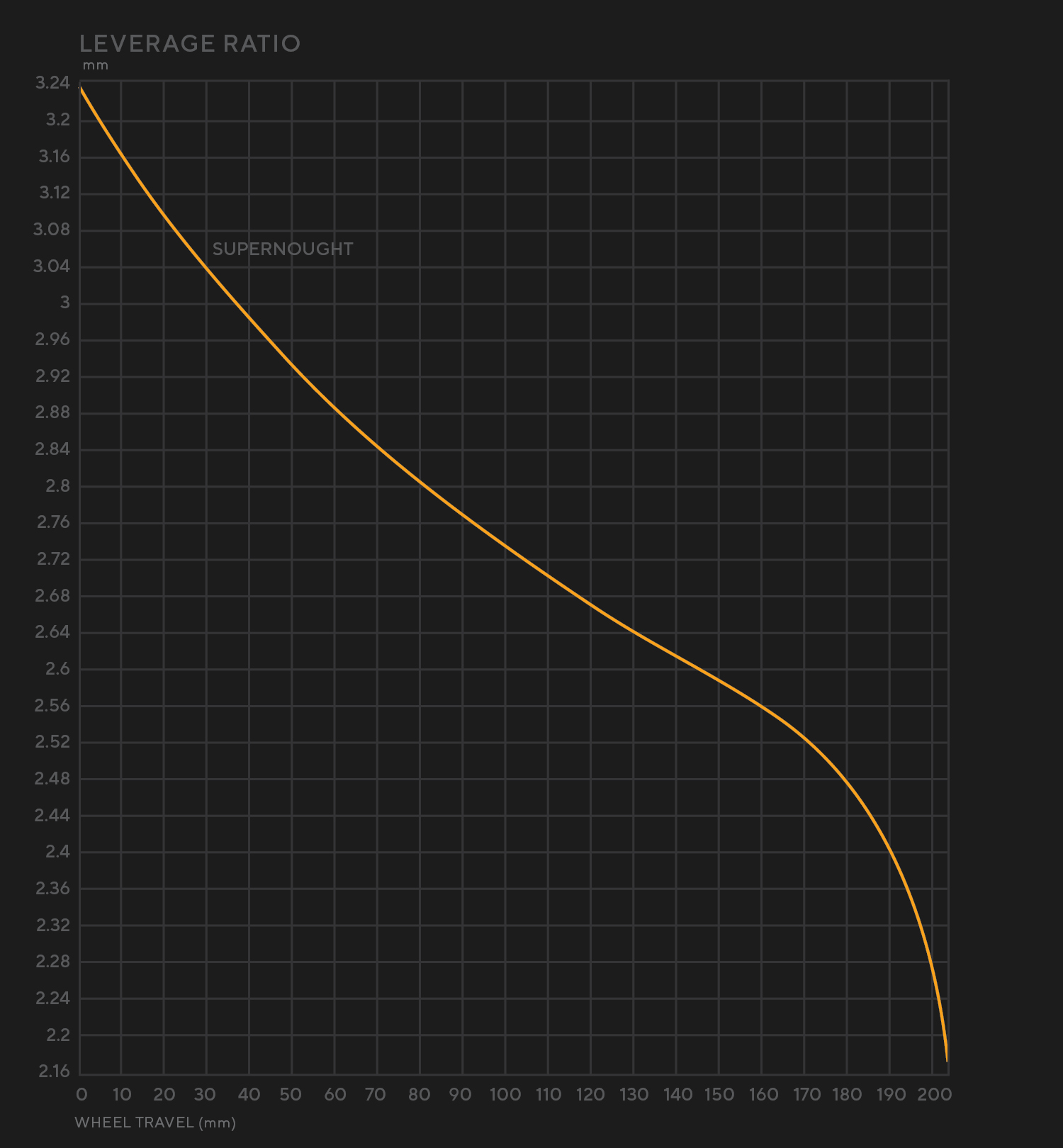
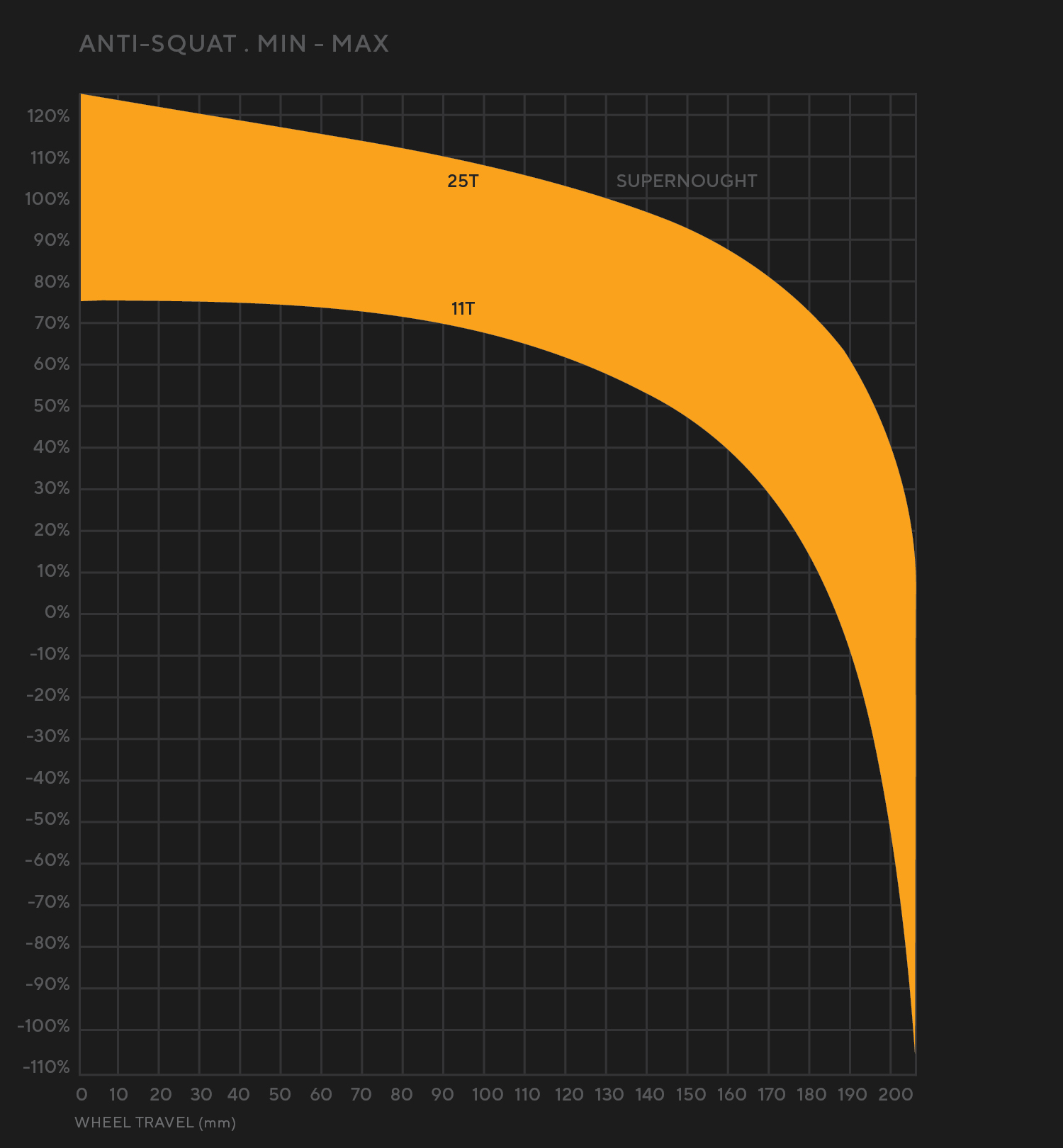

The other details are relatively conventional, but seem well thought out. The Supernought features a threaded 83 mm bottom bracket shell with the lower portion of an ISCG chainguide mount and a built-in guide over the 18-tooth steel idler pulley taking care of things up there. The rear brake gets a 200 mm mount and external routing (the derailleur cable is routed internally), and bolt-on dropouts provide options for running either a 27.5’’ or 29’’ rear wheel, as well as +/- 10 mm of chainstay length adjustability (more on that in a minute).
There are ample rubber guards on the chainstay, seatstay, and downtube, along with built-in fork bumpers behind the straight 49 mm headtube. The rear dropouts, interestingly, use 148 mm Boost spacing instead of the more common 157 mm DH standard, though we’ve seen a number of other recent DH bikes (including Neko Mulally’s recently announced Frameworks one) go that route as well.
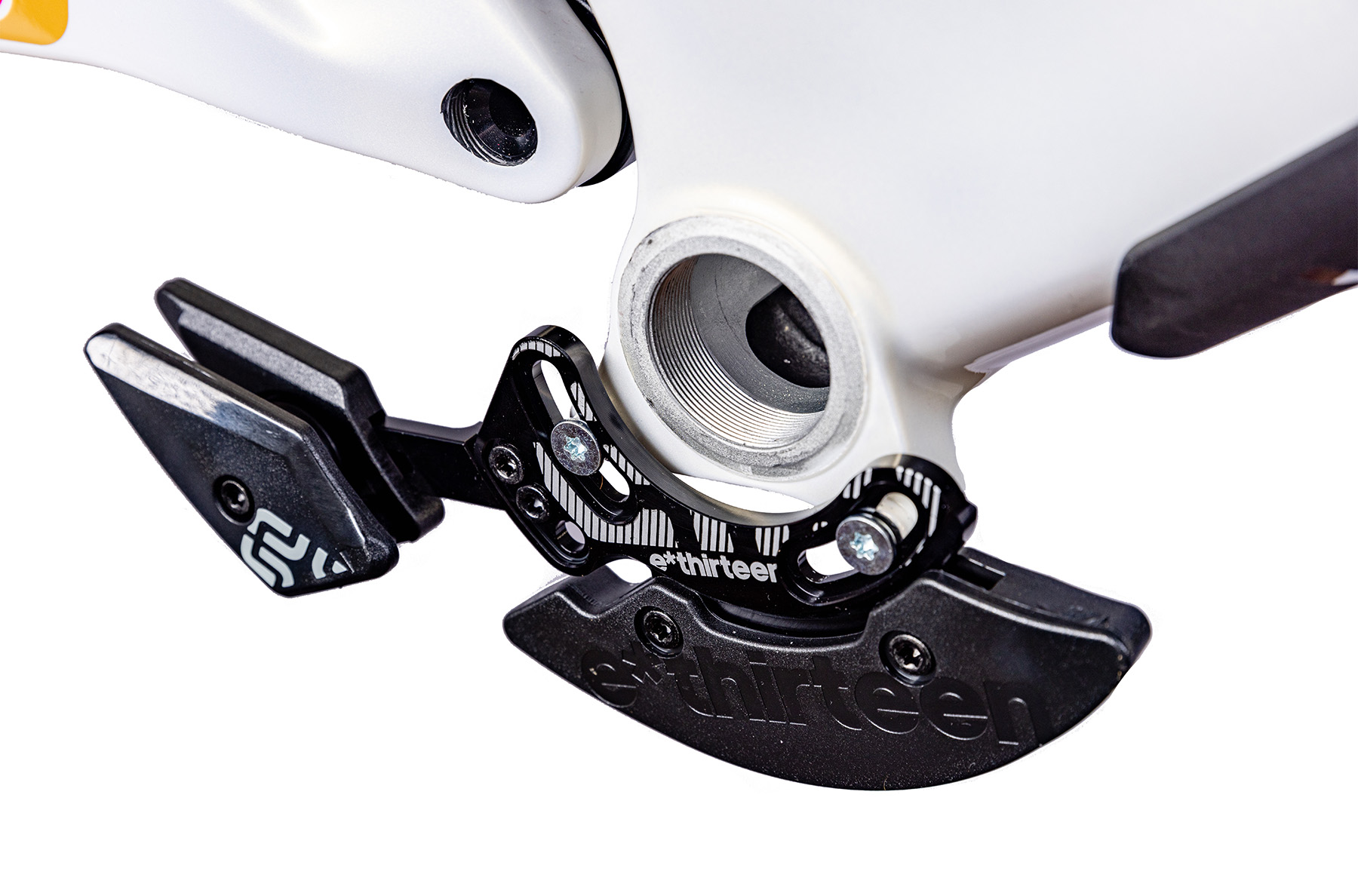
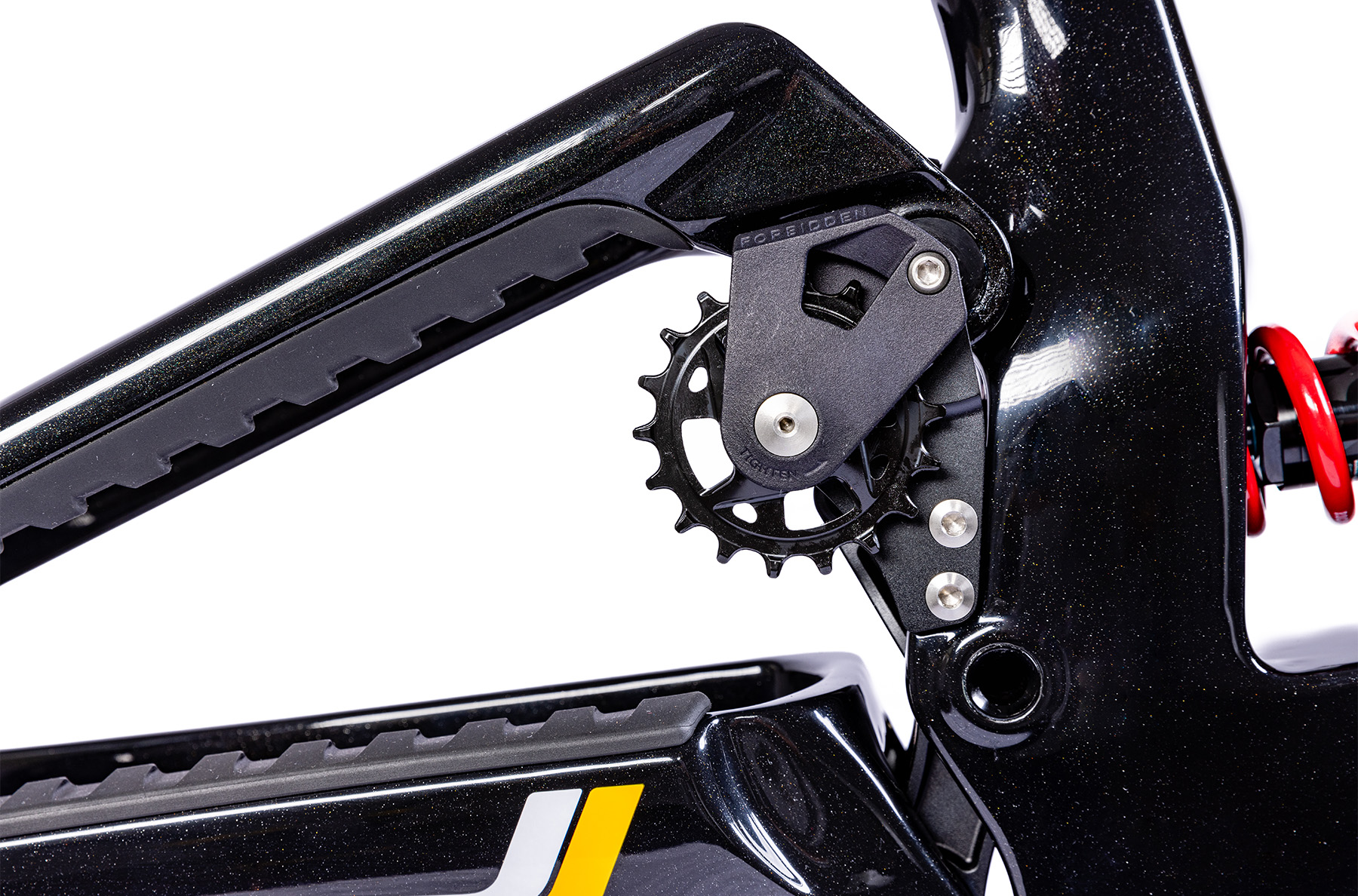




Fit & Geometry
The Supernought is offered in four sizes, labeled S1 through S4, and all get a 63.1° headtube angle; reach numbers range from 420 to 488 mm, in roughly 23 mm jumps between sizes. The stack height jumps by nearly 10 mm per size, starting at 631 mm on the S1 and growing to 658 mm on the S4.
Things get more unusual when it comes to the chainstay length. Like a lot of modern bikes, the Supernought gets size-specific chainstay lengths, but Forbidden has kept their trend of doing much bigger jumps between sizes than most brands. The S1 Supernought starts at a quite-short 431 mm, and each size gains about 15 mm, up to a colossal 475 mm chainstay on the S4 size. Swappable dropouts allow for +/- 10 mm of adjustment on all four sizes.
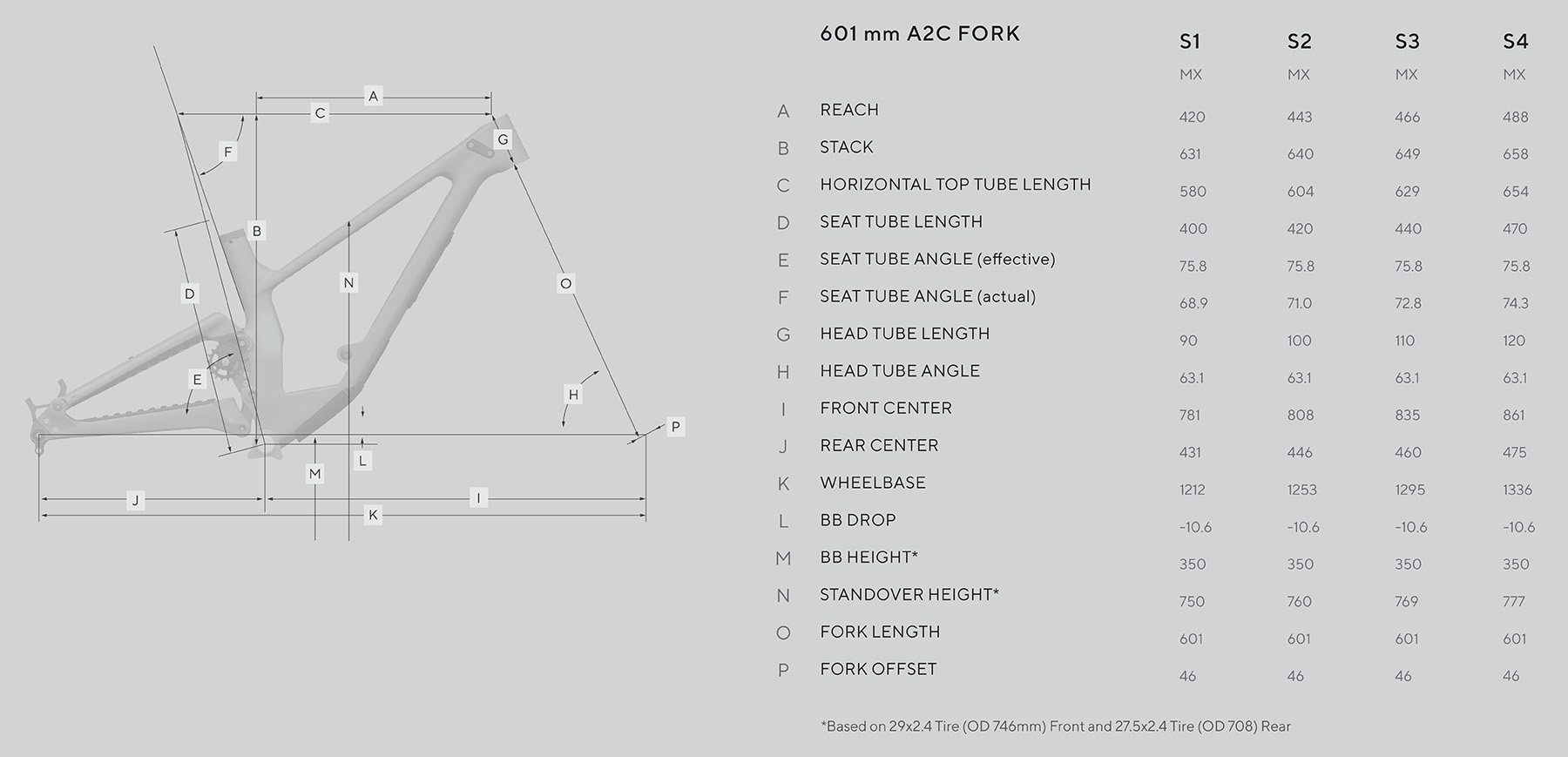
That all adds up to wheelbases ranging from a not-super-long 1,212 mm to a very-roomy 1,336 mm (in the neutral dropout position). Forbidden’s take on chainstay length is that the big steps they offer make for a consistent ratio of front to rear center across the size range, and more similar handling between the different sizes as a result. The math checks out, but it’s notable that Forbidden is going for such big jumps between sizes when three to six millimeters is more common. We’ll be chatting with Forbidden founder and engineer Owen Pemberton over on Bikes & Big Ideas, so stay tuned for a lot more on their design philosophy and approach to geometry, coming soon.
The Builds
Forbidden is only offering the Supernought as a frame kit in the MX configuration for the time being, with a RockShox Super Deluxe Coil shock. It sounds like that’ll be changing at some point (Forbidden’s press release says “… for now” in reference to the build options) but we’ll just have to wait and see what else comes along.
Some Questions / Things We’re Curious About
(1) The Supernought has some interesting things going on when it comes to its geometry and suspension kinematics, so how does it all come together?
(2) The list of high-pivot DH bikes on the market is only growing, so how does the Supernought stack up in that field?
(3) And will we see an updated Dreadnought in the vein of the Druid V2 and Supernought any time soon?
Bottom Line (For Now)
The Forbidden Supernought is clearly meant to be a go-fast DH race bike, and Forbidden has incorporated some interesting details in their pursuit of that goal. It’ll be interesting to see how it all comes together, and how the Supernought compares to the ever-growing crop of high-pivot DH bikes, including the Commencal Supreme, Trek Session, Canfield Jedi, and others. We’ll report back if we’re able to get on one and make a full review happen.
